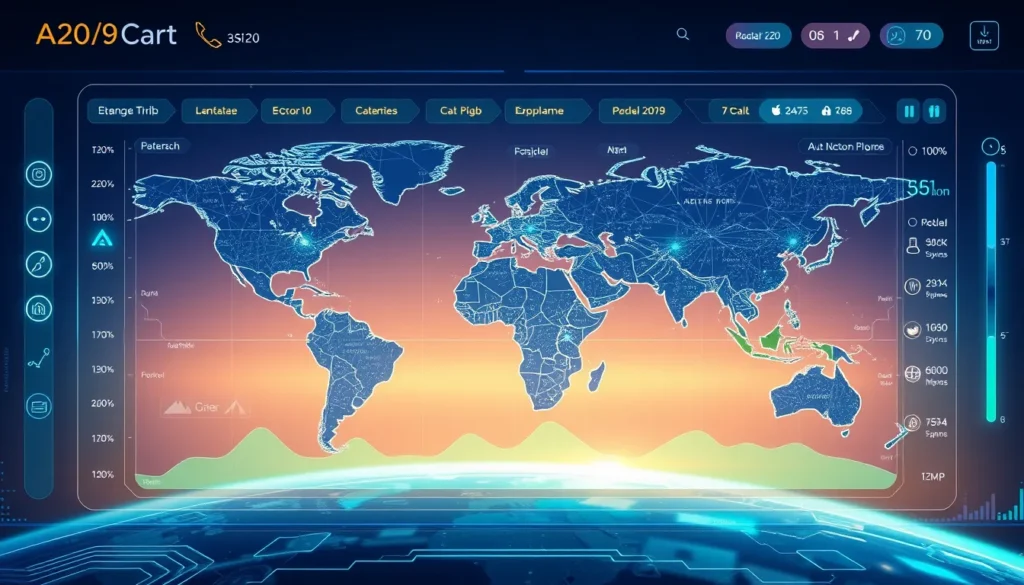Now Reading: AI Orchestration Layer: From Prompt Chaos to Clarity
-
01
AI Orchestration Layer: From Prompt Chaos to Clarity
AI Orchestration Layer: From Prompt Chaos to Clarity

AI Orchestration Layer: From Prompt Chaos to Clarity
In today’s fast-evolving world of artificial intelligence, the concept of an AI orchestration layer is crucial for turning disordered input into reliable, clear outcomes. Businesses and developers are continuously challenged by prompt chaos, making it essential to establish a system that integrates diverse AI capabilities towards robust, streamlined operations. This article dives deep into how the AI orchestration layer not only resolves prompt chaos but also ensures secure and efficient AI integration.
Understanding the AI Orchestration Layer
The AI orchestration layer acts as the central nervous system for AI applications. It coordinates numerous AI models, ensuring that raw prompts and responses are sifted, refined, and integrated systematically. By creating an underlying framework based on prompt chaos to clarity, organizations are able to achieve enhanced reliability and adaptability in their AI systems. This layer serves as a fundamental tool for those looking to build robust AI orchestration systems.
Core Components for a Robust AI System
A successful AI orchestration layer depends on several core functionalities, including:
- Error Handling Protocols: Establishing routines to automatically detect and rectify issues early on.
- Monitoring Systems: Continuously overseeing system performance to ensure real-time responsiveness.
- Feedback Loops: Integrating mechanisms that learn and adapt from previous data to improve outcomes.
These elements work together to minimize disruptions and optimize processes, allowing the orchestration layer to operate at peak efficiency. For further insights on robust technological infrastructures, you can check resources like IBM Cloud which offer extensive guidelines on error handling and monitoring.
Error Handling Protocols and Monitoring Systems
Implementing robust error handling protocols is essential for maintaining the integrity of the AI orchestration layer. By setting up a series of automated checks and system validations, developers can detect irregularities early and mitigate potential failures. Coupled with advanced monitoring systems, these protocols ensure that the orchestration layer remains both resilient and adaptive under varying operational conditions.
Feedback Loops and Scalable AI Systems
A dynamic feedback loop is at the heart of transforming prompt chaos to clarity. These loops allow the system to review performance metrics continuously and make necessary adjustments. Additionally, the incorporation of scalable AI systems means that as demand grows, the orchestration layer is flexible enough to expand resources efficiently, ensuring that performance quality is maintained even under heavy loads. This is crucial for maintaining scalability and robust AI orchestration frameworks over time.
Strategies for Optimizing AI Integration
Optimizing AI integration involves a thorough analysis of current system architecture and potential bottlenecks. The focus is on not just integrating AI models but ensuring that the entire process is coherent and secure. Some effective strategies include:
- Comprehensive Assessment: Begin by auditing your current systems to identify weak points in the prompt processing chain.
- Modular Enhancement: Introduce modular components that can work independently to improve processing efficiency, allowing for easier troubleshooting and upgrades.
- Resource Allocation: Optimize the use of computational resources by leveraging cloud-based platforms and containerization techniques that allow dynamic scaling based on demand.
These strategies, when combined with feedback loops and consistent error management, facilitate a seamless integration process. They help in transforming prompt chaos into concise, actionable intelligence with the help of an AI orchestration layer.
Building Robust AI Orchestration Systems
Building robust AI orchestration systems is not just about integrating multiple components—it’s about designing a system that evolves. By embedding long-tail keywords such as building robust AI orchestration systems and optimizing resource allocation for AI into your development blueprint, you can create a resilient infrastructure that grows with your organizational needs.
Optimizing Resource Allocation for AI
Efficient resource management is key in any modern AI framework. The orchestration layer must ensure that both data processing and computing are allocated wisely to avoid system overloads. The use of cloud solutions and scalable architecture is recommended for distributing workloads evenly, thus reducing latency and improving overall system performance.
Securing AI Orchestration Frameworks
Security and compliance are non-negotiable in today’s digitally driven environment. Integrating advanced security measures—such as encryption protocols, secure data pipelines, and rigorous access controls—is vital for protecting the AI orchestration layer against unauthorized data breaches and malicious interference.
Human-AI Hybrid Orchestration Approach
An emerging trend in AI integration is the human-AI hybrid orchestration approach. This method combines the best of machine efficiency with human judgment. While the AI orchestration layer is designed to automate repetitive tasks and optimize prompt clarity, human oversight remains critical to address nuances and provide strategic direction in decision-making.
Conclusion – The Future of the AI Orchestration Layer
In conclusion, transforming prompt chaos to clarity via an AI orchestration layer represents a significant advancement in AI technology. By focusing on robust integration, stringent error handling protocols, dynamic monitoring systems, and strategic resource optimization, organizations can pave the way for resilient and scalable AI systems. This innovative approach not only improves performance but also sets new standards for security and efficiency in AI deployment.
As the world of AI continues to evolve, embracing these best practices is essential for fostering environments that are both intelligent and adaptable. The journey from prompt chaos to clarity is complex, yet the rewards are manifold—enhancing operational precision, mitigating errors, and ensuring that every component of your AI integration functions seamlessly. This forward-thinking approach is central to the future of technological innovation, making the AI orchestration layer a cornerstone for sustainable AI development.
By adopting the strategies discussed and continually refining your AI orchestration layer, you’re investing in a future where technology works in harmony with both human expertise and advanced algorithms, creating a legacy of clarity and efficiency.

























